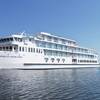This Day in Coast Guard History – August 30
1852- Congress passed the Steamboat Act which established the Steamboat Inspection Service under the control of the Treasury Department (10 Stat. L., 1852). The Act provided for the appointment, by the President, with the advice and consent of the Senate, of nine supervising inspectors. These men, experts in the construction and operation of commercial craft, were paid by the Government. They were to meet once a year for the purpose of consultation and the promulgation of regulations governing the administration of the applicable laws, assigned territory being covered by each of them. Local inspectors, acting under the supervising inspectors, were authorized to issue licenses to engineers and pilots of passenger vessels. Inspectors were now on salary, the amount depending on the number of vessels inspected in each district, the source of which was receipts from fees for inspections and licenses.
1872- The Neptune Line steamer Metis sank in 30 minutes off Watch Hill, Rhode Island. Of 104 passengers and 45 crew, only 33 survived. A coasting schooner struck the Metis, which had a full passenger list and cotton cargo bound for New England textile mills. Captain Daniel Larkin (retired light keeper and one of the first Life-Saving Station captains), Captain Jared Crandall (light keeper), and lifeboat crewmen Albert Crandall, Frank Larkin, and Byron Green launched from the Life-Saving station. Boat Captain John Harvey and crewmen Courtland Gavitt, Edward Nash, Eugene Nash, and William Nash saw the collision and launched a fishing seine from the beach. The lifeboat and seine rescued 32. Revenue cutter Moccasin from Stonington, Connecticut, met the boats, took their passengers, and located a survivor. The Moccasin and seine continued to search until dark. Participants were awarded Certificates of Heroism from the Massachusetts Humane Society and gold medals, minted to commemorate the rescue, by Congressional resolution, February 24, 1873. The event signified the growing interaction among the members of the Life-Saving Service, the Lighthouse Service, and the Revenue Cutter Service, a factor that led to the later merger of the three services.
1941-Coast Guard JRF-1 Grumman "Goose" V-184 was sent to Midland, Texas, for a photographic flight in cooperation with the Agricultural Adjustment Administration.
(Source: USCG Historian’s Office)










